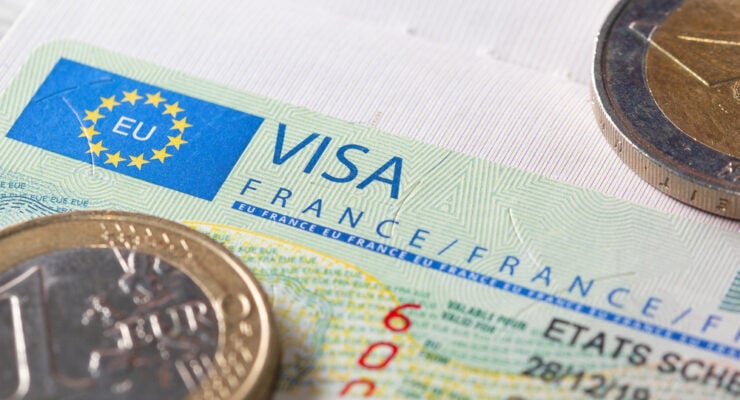How to get the pill in 15 Working Holiday destinations
The easiest way to keep using your preferred birth control pill as usual when travelling is to stock up before leaving home. This will save you all the hassle of finding a doctor who can prescribe it and/or finding the equivalent dosage in your Working Holiday country.
However, if this is not possible, here’s how you can get the pill in 15 popular Working Holiday destinations.
Argentina – “Píldora anticonceptiva”
Birth control pills are offered free of charge in public hospitals but you will have to pay if you go to a pharmacy. No prescription is needed in Argentina! So it’s up to you to find the equivalent of your usual pill—review the medicinal ingredients and dosage.
For more info, read this page (in Spanish) on the Argentine Ministry of Health website.
Australia – “Birth-control pill”
You will need to see a GP for a birth-control pill prescription. Your contraceptive will cost at least AU$15 per month.
If you run out of the pill, the pharmacist can dispense an emergency tablet without a prescription, provided you can prove that the pill has already been prescribed and that you have no side effects with it. A prescription written by a healthcare professional from your home country may be accepted.
Brazil – “Pílula anticoncepcional” or “pílula contraceptiva”
The contraceptive pill is available over-the-counter (without prescription) in “drogarias”. You can take a box of your usual pill to find the same active ingredients and dosage—you may even find that the same brand you’re using is sold in Brazil.
Expect to pay between R$7 and R$40 for the most expensive brands. For more info, read this list of the most common pill brands sold in Brazil (in Portuguese).
Canada – “Birth-control pill”
You will need a Canadian prescription to get the pill. Don’t try to find a gynecologist, the wait list is long. Simply go to a walk-in clinic where healthcare professionals—most of the time, a general practitioner—will take your medical history, request tests if necessary, and write you a prescription. Note that as of July 2023, pharmacists in eight Canadian provinces (Alberta, British Columbia, Saskatchewan, New Brunswick, Nova Scotia, Newfoundland and Labrador, and PEI) can prescribe contraceptives.
You will have to pay for your prescription out of pocket. It should be around $20-50 per month—you can ask for the generic option to lower the cost. Note that prices vary across pharmacy chains (Shoppers Drug Mart, Walmart, Rexall, etc.), so shop around. Your prescription will then be on file with whatever chain you choose, which makes refills easier across the country.
Pharmacists can renew your Canadian prescription for up to a year.
Chile – “Pastilla anticonceptiva”
It seems possible to get a free or low-cost prescription for the contraceptive pill in public hospitals.
Colombia – “Píldora anticonceptiva”
Even though IUDs are more popular, the pill is widely used in Colombia, and many brands are available. Find out about the composition and dosage of your usual pill.
The various contraception methods available in Colombia are presented on the website of Profamilia (in Spanish). This organization works like Planned Parenthood—you can contact them for a medical consultation to get a prescription for the pill or any other contraceptive.
Ecuador – “Píldoras anticonceptivas”
Contraceptive pills are available over the counter. You won’t be asked for a prescription.
Hong Kong – “避孕藥” (“bìyùn yào”)
The pill is only available with a prescription so you will have to see a GP first.
Japan – “経口避妊薬” or “ピル” (“keikō hinin-yaku” or “pi ru”)
You will need a Japanese prescription to get the pill.
Japan only offers low-dose oral contraceptive pills, so bring your prescription to help Japanese doctors find an equivalent.
The doctor’s consultation and the mandatory blood tests are covered by the Japanese healthcare system but not the pill. Expect to pay around 2,000 yen per pack.
Mexico – “Píldora anticonceptiva”
The pill can’t be dispensed without prior medical consultation with a doctor, gynecologist or family planning centre.
New Zealand – “Birth-control pill”
Making the pill available without a prescription has been discussed since 2016 but it’s still required as of 2023. You can get a prescription from a GP at one of the 20 Family Planning clinics throughout the country.
Peru – “Píldora anticonceptiva”
The contraceptive pill can apparently be prescribed free of charge from 8,000 health centres in Peru—simply make an appointment at the nearest centre with a “Planificación Familiar” clinic.
Contraceptive rights and access to birth control are still relatively new topics in Peru, so it may be advisable to stock up before your trip.
South Korea – “피임약” (piim-yag)
You don’t need a prescription to get the pill in Korean pharmacies. However, the tricky part will be finding an equivalent. For instance, contraceptive pills are available with lower dosages than in Europe. So bring your usual prescription with the names of the active ingredients and the dosage, so that a Korean doctor or pharmacist can find an equivalent more easily.
A month’s supply costs between 6,000 and 8,000 won, depending on the formula used.
This site offers a table of pill equivalents, with dosage.
Taiwan – “避孕藥” (“bìyùn yào”)
The pill is available in pharmacies (not Watson-style drugstores). However, this contraceptive isn’t as popular as in other parts of the world, mostly because like most chemical drugs, it seems to go against traditional Chinese medicine principles. Doctors will even advise against it, believing such treatment to be dangerous in the long term.
In any case, you won’t need a prescription and you can often choose the pill you want—bring your usual prescription to find an equivalent.
Expect to pay around NT$450 per month for the pill.
Uruguay – “Píldora anticonceptiva”
The pill is available in Uruguay. You will need a prescription.












 Français
Français English
English



0 comments
{{like.username}}
Loading...
Load more